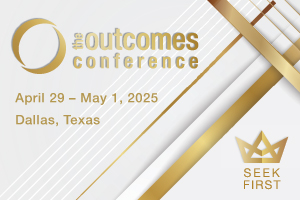
Preserving Culture By Jeff Jernigan
 Preserving Culture in Faith-Based Organizations
Preserving Culture in Faith-Based Organizations
A culture is only as good as its leadership. Programs, mission integration, and other methods of establishing and growing a distinct culture are important, but only if the desired traits for the organization are being demonstrated on a day-to-day basis by people in leadership roles.
A leader’s personal values and behaviors are ultimately what shapes a culture within an organization. It is therefore crucial to establish leaders who model integrity, appropriate transparency and vulnerability, accessibility and visibility, a servant attitude, the ability to be highly relational, and the ability to live out the organization’s mission via value-driven behaviors. These character qualities then seep into the DNA of the organization, both in the people who work there and the resulting policies and strategies. Employees take their cues from leadership, and it’s the working community that ultimately maintains and grows a culture.
Three primary keys to establishing a unique culture as a faith-based organization will flow out of this style of leadership: reinforcing the “why,” celebrating the organization’s impact, and advancing mission integration.
Key #1: Reinforcing our why
If employees do not fully understand and internalize the “why” behind what the institution does, there will be little motivation, conviction or commitment from them. Leadership should reinforce the “why” at every turn, reminding the team of the significance of their work and the inspiration behind it. When this is communicated clearly and often, it not only unifies the team but gives them a sense of urgency and enthusiasm for their work.
The “why” should be communicated to the entire staff, including leadership, frequently and consistently. If an employee is asked by a random passer-by why he does what he does at the organization, he should know the answer and be able to communicate it himself. Being clear about this also helps employees stay on the same page and allows potential employees to determine whether or not the place is a good fit for them.
Employees should also not only be allowed, but encouraged, to provide feedback to leadership concerning the “why,” whether they have concerns, accolades, or simply need clarification.
Key #2: Celebrating Impact
Working hard is important, but celebrating the fruits of the labor is also a necessary experience to not only build morale but inspire a team to continue their work to the best of their ability. Internal and external communications should celebrate the impact the organization is making in the community and the people it serves, particularly with stories rather than data measurements. Data is great for measurement and planning, but stories inspire. Sharing stories of success, redemption or any other way the organization has made a difference in even just one life is a great way to unify the team and refresh morale.
Make it personal. People want to know how their work or donations or service is being utilized and experienced by others. Sharing these stories and updates with external stakeholders will not only make them feel encouraged but feel a part of the community of your organization and its mission. Social media, e-mail campaigns or even hosting events are great ways to share.
Key #3: Advancing Mission Integration
It’s easy to get caught up in the day-to-day operations of the organization and lose sight of whether or not the organization’s mission is being infused into all areas of the organization, spreading to everything it touches. Mission integration should be a key result area managed at a faith-based organization and made a priority for both leaders and team members. To do so, establishing long-term and short-term goals are crucial. Having measurable steps and actions mapped out will help ensure the mission doesn’t get lost in the shuffle and is a living, breathing element at work within the organization on any given day.
Additionally, mission integration should not be hoisted on one person alone. If leaders in the organization are all-in concerning the mission and understand its importance, they will not take this responsibility lightly or see it as a burden. With a team approach, not only will more be accomplished, but the unique culture of the organization will be continually reinforced, keeping everyone on the same page regarding its values and purpose.
More than just programs and goals, though, mission integration is ultimately an internalization of the organization’s values on a personal level for employees and leadership that will affect thought and therefore behavior. It’s an ongoing spiritual transformation reflective more of who these individuals are rather than specific things they do.
When it comes down to it, potential students, patients, or clients don’t seek out faith-based organizations because of their tax-status or historical bylaws. They seek out faith-based organizations for care, education and help because they intuitively understand the experience will be special, filled with compassion — qualities cultivated by a uniquely faith-inspired culture and a team committed to sustaining it day in and day out.
####
Register by October 31 for additional savings!





